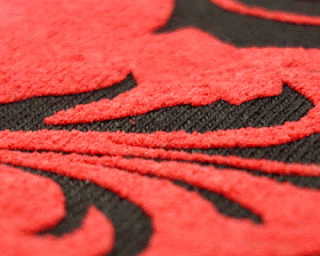Using Chem 8100 to Clean Screens and Squeegees
Posted by Mary Yaeger - 8/29/2017
In the video above, Texsource team member, Dwayne Collins, demonstrates how to expand your usage of the Texsource Chem 8100 Press Wash. Texsource Chem 8100 is a press wash designed for lightning fast screen reclaim. Not only can you clean up blocked image areas, Dwayne shows us how to clean up squeegees.
Squeegees, just like everything else in your shop, needs to be taken care of to ensure durability and a long squeegee life. You can always just wipe your squeegee off, but what about the hard to reach places? You know, those hard to reach nooks along the rubbers' edge. That's where Chem 8100 comes in handy. Spray it on and use your rag to wipe away the dissolved ink - even running your finger along the edges to make sure all the hard to get plastisol ink has been removed.
Another perk of the Chem 8100 is that it has no odor which makes working with it more pleasant than other washes. It also does not lock in photopolymer emulsions and films which allows for quick and easy reclaiming.
Once you are ready to start printing again, you don't have to worry about a long wait before re-taping your screens or changing colors. Chem 8100 dries in a matter of seconds meaning that you can get back to the funnest part of the job - printing!
Below is an outline of how to use Texsource Chem 8100 Press Wash:
Clean up excess ink from you screens using clean up cards. This is the best way to get as much ink off the screen as possible - and it saves you money! That ink can be placed right back into its original container for later use (recycling win).
It is easiest to use Chem 8100 in a spray bottle, but if you don't have a spray bottle you can apply the wash using a rag.
If you are using a spray bottle, simply spray the image area and use a shop rag or old shirt to wipe away the remaining ink.
If you are applying the wash by rag - agitate the ink with the wash rag and wipe away the dissolved ink.
An important thing to note about the rag you use is that you will need to continuously roll it to make sure you are picking up ink and not just smearing it around. Reapply Chem 8100 as needed and continue to follow up with a dry rag wiping both sides of the screen.
Your screen is ready for tape application and more printing within 10-15 seconds.

























0 comments: